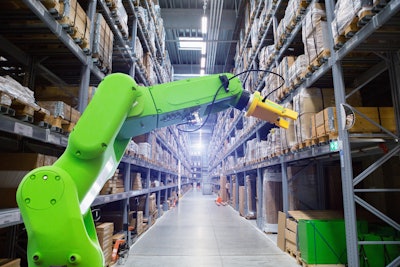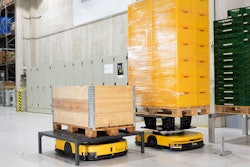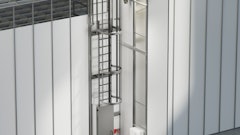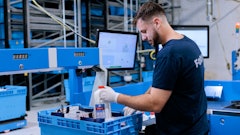
North American robot orders remained essentially flat in the first quarter of 2025, with companies purchasing 9,064 units valued at $580.7 million, according to new data released by the Association for Advancing Automation (A3). Compared to Q1 2024, this represents a 0.4% increase in units ordered and a 15% rise in order value, signaling continued demand and increased investment in higher-value automation systems.
“The first quarter data highlights a continued resilience in automation investment, particularly in the automotive sector, even as manufacturers navigate a complex macroeconomic environment,” says Alex Shikany, EVP at A3. “At the same time, some sectors are taking a more cautious approach as broader economic uncertainty persists.”
Key takeaways:
· Demand from automotive original equipment manufacturers (OEMs) was the primary growth driver, with 3,668 units ordered valued at $263 million, a 42% increase in units and a 78% increase in revenue over Q1 2024. The revenue growth reflects not only higher volume, but also a shift in the types of applications being automated this quarter, with a greater share of orders tied to higher-value systems. In contrast, orders from automotive component suppliers declined 29% in units and 12% in value year-over-year, totaling 1,407 units and $88 million.
· Most non-automotive sectors experienced contraction relative to Q1 2024, with the exception of plastics and rubber, which saw 12% growth in units ordered and a 33% increase in order value. Sectors such as food and consumer goods, metals, and semiconductors experienced year-over-year declines.
· In Q1 2025, North American companies ordered 1,052 collaborative robots valued at $39.2 million. Cobots accounted for 11.6% of all robots ordered and 6.8% of total revenue this quarter.
· Cobot demand was strongest in industries prioritizing flexibility and safe human-machine collaboration, such as life sciences/pharma/biomed: 127 units ($7.1 million); food and consumer goods: 114 units ($4.5 million); and all other industries: 419 units ($13.5 million).
· In each of these segments, collaborative robots made up over 20% of total demand.


















